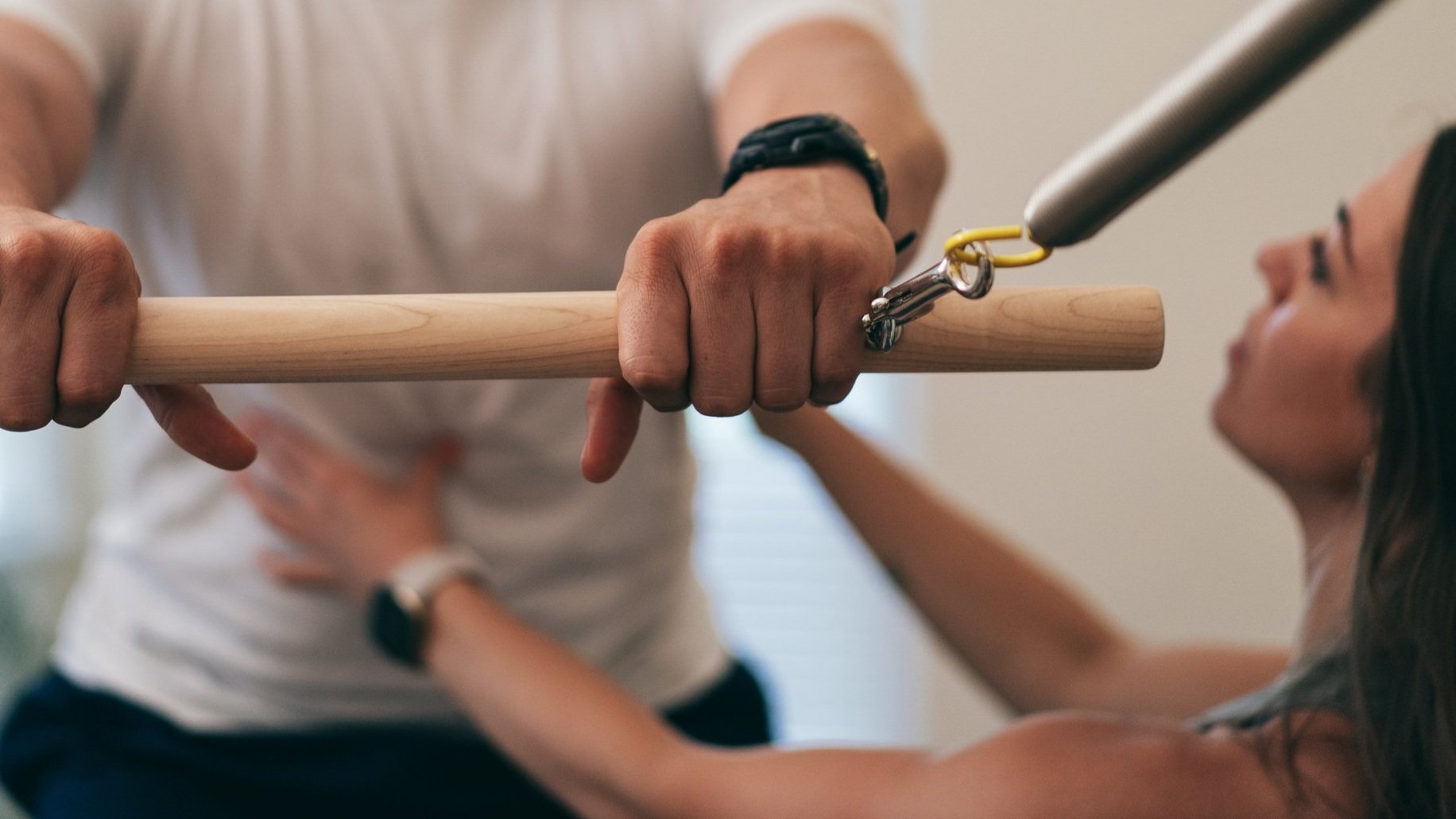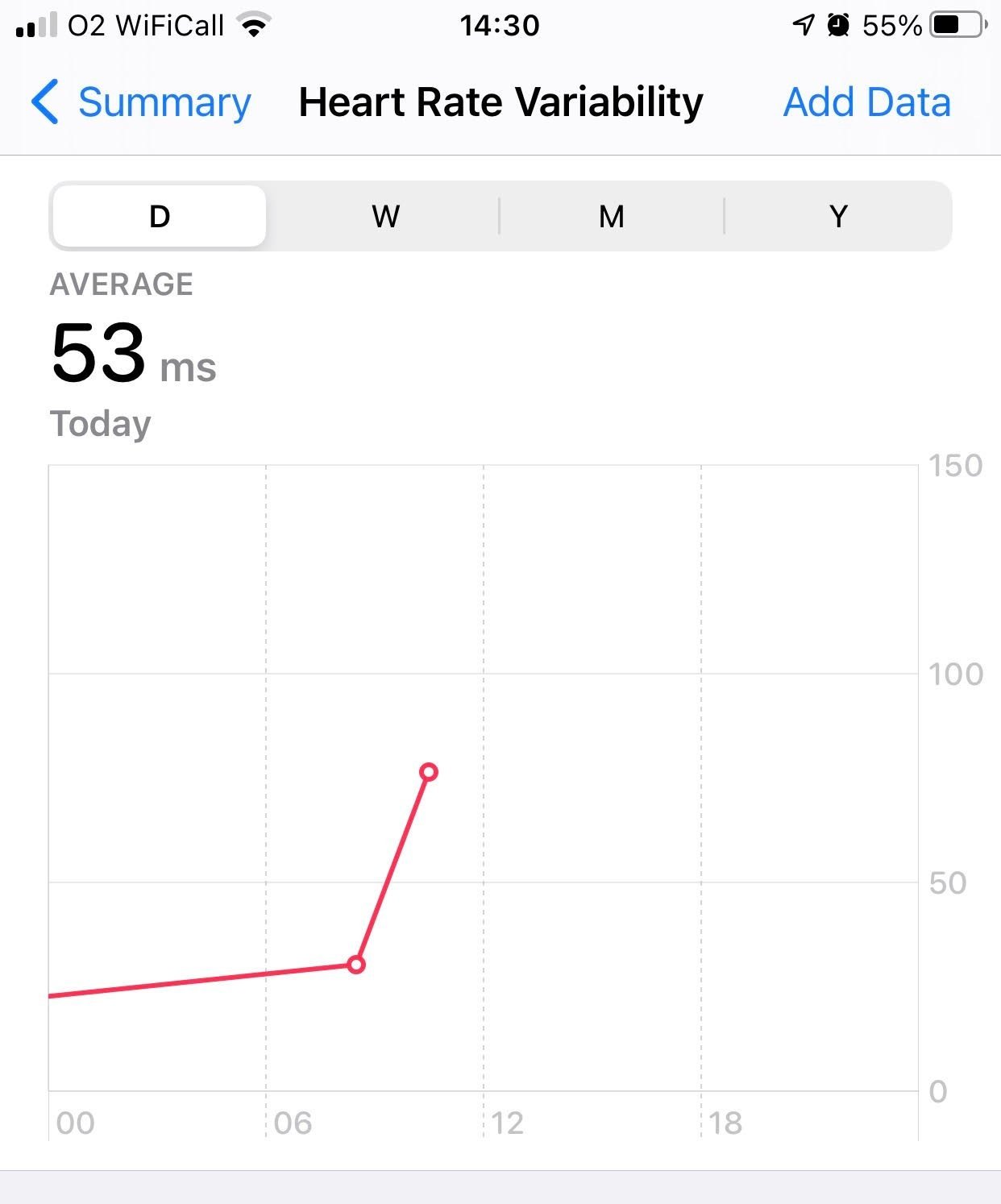The Measurable Tool To Unlock Healing?
Heart Rate Variability (HRV)
Heart rate variability (HRV) is the measurement of the space between your heart beats, it can help you understand the state of your nervous system, when to train, when to rest and can be used to help us work out what is and isn’t working for you on your healing journey. Most wearable devices now come with the ability to monitor and record your HRV so you can use this tool at home as a way to navigate your healing - directly reading your nervous system.
A bit about HRV
A normal, healthy heart does not tick like a metronome. Rather than creating an even space between ‘ticks’, there is a consistent variation in the milliseconds between heartbeats. Which is where the name heart rate ‘variability’ comes from. Good HRV means your body can adapt and self regulate well to physical and mental stressors.
What is the difference and importance of HRV, HR and RHR?
Heart Rate Variability (HRV)
Heart Rate (HR)
Resting Heart Rate (RHR)
HRV measures the specific changes in time (or variability) between successive heart beats. It differs from resting heart rate - which counts the number of beats per minute. A low HR demonstrates rest while a high HR can mean you are either exercising or experiencing stress, or the effects of substance use.
At rest, heart rate (RHR) should be between 60-100 beats per minute for adults. A low RHR can indicate good general cardiac fitness and efficient heart function; this can be as low as 40 beats per minute for a well trained athlete. A high RHR could be caused by stress, anxiety, low cardiac fitness, caffeine, nicotine, alcohol. Excessive variations and very high or very low RHR can indicate a more serious health concern and should be guided by a healthcare professional.
Whilst health is shown as a lower RHR, a higher HRV indicates a higher level of health.
HRV ranges
HRV averages decrease with age. Here is a graph to demonstrate HRV for your age bracket.
Image source: Whoop.com
What causes a low HRV?
Stress
A low HRV can be caused by stress - emotional, physical, real or imagined. Stress causes the heart rate to increase. The increase in heart rate means that the time between heart beats decreases and can become very small.
Other stressors that lower HRV include structural stress, such as chronic tension or instability and illness.
Shallow breathing
Any type of stress can cause shallow chest breathing which can also contribute to low HRV. This is because of the Vagus Nerve (VN), (Latin and Greek for ‘wandering’) which ‘wanders’ from the brainstem all the way down into the cardiovascular system, digestive system, reproductive system and to many other organs. It has been described as the backbone to the autonomic nervous system (ANS).
When we breathe deeply, diaphragmatically, we move all of our organs with the breath, massaging and strengthening the tone of the vagus nerve and therefore increasing its strength. When we consider that the ANS dictates the rate at which our heart beats, we can see why strengthening the VN and reducing shallow chest breathing is important to increase HRV.
How can we monitor our own HRV?
These days, most wearables come with an HRV monitor. It is important to know that our HRV varies throughout the day and from day to day and to assess your overall health, use your average HRV and see how quickly it recovers following exercise and moments of stress.
How can we use HRV measurements as a tool to plan each day and our path to healing?
Now that we understand that stress (physical, emotional, real or imagined) is the cause of low HRV, we can turn that around to use an HRV reading to tell us how much stress our system is experiencing.
HRV is a direct reading of your nervous system, how it responds to everything you put upon it and whether it is strengthening over time.
We can use HRV readings to see how we respond to exercise, work, emotional stress and even foods. AND use this data to plan how and when we exercise, engage with people and projects and ultimately plan our lives to achieve our goals with the confidence that we are, in parallel, strengthening our overall health.
Exercise
If you are someone returning to exercise after some time off, then we can see how that particular exercise affects your HRV and determine whether you worked too hard or it is in fact the very thing you need to strengthen your HRV (nervous system, heart efficiency, cardiac health) over time.
Exercise is a stressor, but it should be a positive one. Depending on the type of exercise you undertake, you will likely see a drop in HRV during training, that will last for up to one week (the fitter we become the faster our recovery, if recovery is slow, perhaps you need to allow more true rest and look into your diet for recovery). But over time your average HRV should rise. If it falls over time, or stays low, then you know the type of exercise you are undertaking is too much for your system right now, perhaps your body is already dealing with another stressor and some time spent reducing that stressor will enable you to better enjoy the benefits of exercise.
HRV can be used daily to work out our readiness to exercise or take on challenges. This is particularly helpful for people on a healing journey who aren't sure if they are pushing themselves too much, concerned about potential burn out or looking for a more therapeutic style of exercise. As our bodies are all different, you can use your HRV reading to see how your body is responding to everything you put upon it.
Rest
If your HRV is lower than normal one day, then this is a strong indicator that your body needs today to be a rest and recovery day. If your HRV is high, this is a day where you can complete a more challenging workout and relax more around food. It would be a good day to complete that task you have hanging over you or to have that difficult conversation you haven’t yet faced. But do. not do everything at once, and consider your pace- spread things out throughout the day to keep your HRV from plummeting the next day.
Food
If your HRV rises suddenly when you eat a certain food, it is a good indicator that you might be sensitive to that food and could benefit from cutting it out for a while. Often re-introducing that food slowly after a 3 month break is enough to remove the sensitivity unless you are allergic. Gluten is the only exception - I would suggest support from a functional nutritionist if you have sensitivity concerns around food.
Relationships
A lower HRV after you’ve spent time with a friend? Perhaps they are an energy sucker and not helping you on your path to energy and healing? An increased HRV whilst spending time with a friend... Hang on to them! These are your people. Take note of your HRV the following day, as the average is taken over a 24 hour period, and may not show immediately.
Lower than average HRV
Someone who has a lower than average HRV for their age bracket is experiencing some sort of chronic stress on their system and first, we need to work out if there is an underlying health concern that needs to be addressed or indeed a chronic stress response caused by past event or series of events. If your HRV is regularly lower than average, it is worth investigating if something else is going on to cause a chronic stress response in your system.
Can HRV really be increased?
Yes. This is a real time HRV reading from a client of mine immediately before, during and after a 1 hour Movement Therapy session with me. Recorded on an Apple watch.
HRV can be increased instantaneously with things such as:
Therapeutic yoga
Meditation
Mindfulness
Movement Therapy
Hugs, connection, skin to skin contact, sex
Baths, especially epsom salt baths
Slow breathing techniques, rhythmic diaphragmatic breathwork
Laughter, play
Spending time doing anything you enjoy
HRV can be increased over time with things such as:
All of the above
Exercise
Removing stressors - foods, emotional stressors, swapping vigorous exercise for more gentle exercise until your system has recovered
Consistent, good quality sleep
Supporting the circadian rhythm
Sunlight exposure
Infrared light exposure
Lower alcohol intake
Reconnecting with nature
Intermittent fasting (for those without blood sugar issues. This can cause stress to the system so it isn't suitable for all).
Staying hydrated
Steady healthy diet
If you aren’t sure where to get started on your healing journey, book your free Health and Happiness Coaching session with Charlette to work out exactly how you would like to feel and what your body needs to get you there.



